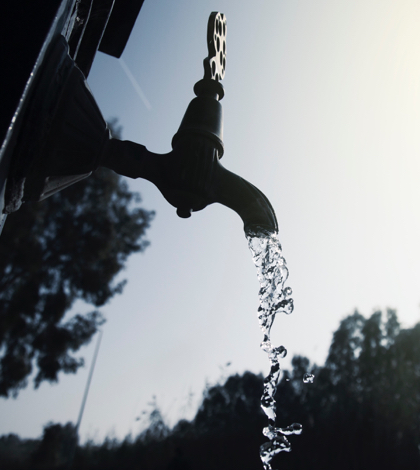Four San Jacinto Valley water agencies — Eastern Municipal Water District (EMWD), Lake Hemet Municipal Water District (LHMWD), and the cities of Hemet and San Jacinto – have collectively set a goal of recharging more than 23,000 acre-feet in 2017. This goal has been set after the four agencies collectively put more than 12,000 acre-feet of surface water into the local groundwater basin in 2016.
The intent of the four organizations is to both counter the effects of the most recent multi-years-long drought and, in spite of 2017’s rain deluge, to ensure that the region is prepared for future drought cycles. The water will be extracted in coming years through wells operated by the respective agencies and by the Soboba Band of Luiseño Indians and used for drinking water purposes.
“By being aggressive in how much water we recharge, our agencies are ensuring that our region is well-prepared for future drought cycles, whenever they may occur,” David Slawson, EMWD president said. “It is our responsibility to act decisively and manage our supplies and appropriately plan for the future. By optimizing water capture during wet years, we are able to ensure reliability for our customers and businesses during droughts similar to the one we have recently experienced.”
After the state eased drought conditions in the spring of 2016 Eastern Municipal Water District began putting water purchased from the Metropolitan Water District of Southern California (MWD) into settling ponds in the San Jacinto Riverbed as part of its Integrated Recharge and Recovery Program (IRRP). Intentional recharge is a process of supplementing groundwater supplies by allowing water to percolate into the groundwater aquifer. This process supports the four agencies’ Groundwater Management Plan and results in additional groundwater supplies that can be used for potable purposes.
California’s extended drought resulted in MWD suspending water available for recharge from July 2013 until May 2016. When the State Water Project increased deliveries last year, MWD was able to ensure delivery of additional imported surface water supplies. Local efforts were quickly resumed to increase the amount of water stored within the groundwater basin.
The four water providers in the San Jacinto Valley are responsible for recharging an annual average of 7,500 acre feet of imported untreated water per year under the terms of a federal judgment related to water rights for the Soboba Band of Luiseño Indians. EMWD owns and operates the facilities to deliver water to percolation ponds. Each agency has a certain volume of water that it must purchase from MWD each year as part of those recharge efforts.
Through the end of the 2016 calendar year, 12,656 acre-feet (4.1 billion gallons) of water imported from the Sacramento-San Joaquin Delta through the State Water Project system was recharged into the local groundwater basin, including 9,142 acre-feet at the IRRP ponds, and 3,514 acre-feet at the Grant Avenue Ponds. EMWD was also able to divert an additional 515 acre-feet of stormwater naturally flowing through the San Jacinto River into EMWD’s Grant Avenue Ponds.
Since the start of 2017, a total of 1,107 acre-feet of water has been imported and 642 acre-feet of stormwater – more than 20 million gallons per day — has been captured, for a total of 1,749 acre-feet, for the purpose of groundwater recharge in the area.
If the 2017 goal of recharging more than 23,000 acre-feet of water in 2017 is met, the San Jacinto Valley agencies would be ahead of their average annual recharge rate and will be credited with having put surplus water into the groundwater basin.
“Through these efforts, we are able to ensure the long-term sustainability of our local water supplies,” Lake Hemet President Frank Gorman said. “Our agencies have and will continue to work together to ensure that our region is well-prepared for future water supply challenges. These recharge efforts are an example of the importance of agencies working together for the benefit of all residents.”
 California Water News Daily Your Source For Water News in California
California Water News Daily Your Source For Water News in California


